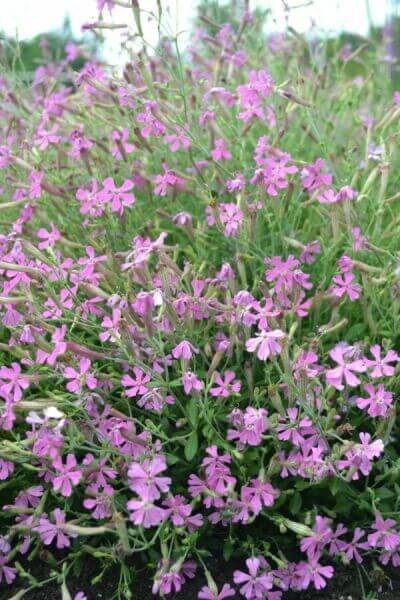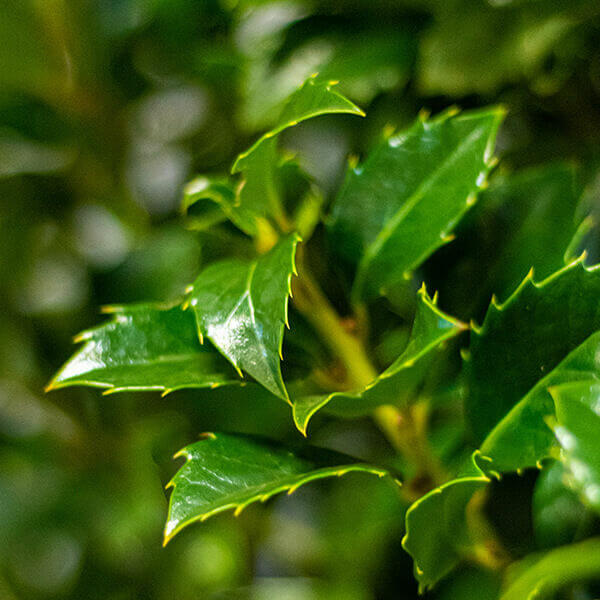Hedge Plants For Visual Barriers
Hedge Plants For Visual Barriers
Blog Article
Hedge Plants For Patio Edges
Boost your garden's allure with rich hedge ranges such as Yew (Taxus), Thuja, Laurel, Photinia, and Bamboo, celebrated for their structural stability and environmental advantages.
Yew and Thuja provide evergreen protection and winter season durability, while Laurel uses rapid development and broad, aromatic leaves.
Photinia adds seasonal appeal with its lively red foliage, and Bamboo lends a low-maintenance, peaceful atmosphere.
These hedges improve air quality, decrease sound, and create tranquil, private areas.
Correct planting, spacing, and upkeep make sure energetic growth and ecological harmony.
Check out how these lavish varieties can elevate your garden's beauty and well-being.
Secret Takeaways
Transform Your Garden With Lush Hedge Varieties
- Select Yew for its thick, evergreen development and exceptional longevity.
- Select Laurel for its quick growth and broad leaves, guaranteeing quick privacy.
- Choose Photinia for its dynamic seasonal foliage, which turns a striking dark red.
- Utilize Bamboo for a low-maintenance, winter-hardy hedge with aesthetic appeal.
- Space plants 2-3 per meter and prune routinely for ideal growth and health.
Popular Hedge Plants
When transforming a garden with rich hedge varieties, it's necessary to think about popular hedge plants such as Yew, Thuja, Laurel, and Photinia due to their special attributes and advantages.
Yew (Taxus) is extremely esteemed for its durability and dense, green growth, making it a prime choice for withstanding landscapes.
Thuja is noted for its evergreen foliage and robust winter resilience.
Photinia adds seasonal vibrancy with red leaves that darken over time, developing vibrant visual appeal.
Laurel uses fast growth and fragrant, broad leaves, suitable for quick privacy.
Additionally, Bamboo is an excellent option for atmosphere, providing a low-maintenance, winter-hardy choice that improves the garden's aesthetic with its elegant, swaying walking canes.
These choices accommodate a variety of horticultural needs and choices.
Advantages of Garden Hedges
Garden hedges offer a wide range of benefits, making them an important addition to any landscape. These natural barriers are economical to implement and supply substantial wind protection, improving air circulation and adding to sound reduction. The dense foliage of hedges like Thuja and Beech makes sure personal privacy by blocking visibility, creating a secluded and peaceful environment.
Hedges also play an essential role in microclimate policy, offering a steady environment that promotes plant development and lessens temperature level variations. Their detailed leaf structures filter toxins, enhancing air quality and adding to a much healthier garden community.
Furthermore, hedges excel in noise reduction, absorbing and deflecting sound waves to lower ambient sound levels. This double performance of offering both acoustic and visual privacy enhances the overall tranquility and visual appeal of any garden.
Planting and Upkeep Tips
For a successful hedge, meticulous preparation of the planting area is vital. Guarantee the soil has correct pH and drainage to support strong root development.
Area the plants appropriately for the picked species. Water the hedge often throughout its preliminary growth stage, changing as needed with seasonal modifications.
Carry out a organized pest control and disease avoidance strategy, using chemical or natural treatments when essential. Routinely check for aphids, mites, and fungal infections.
Apply mulch to maintain wetness and suppress weeds. Seasonal pruning promotes thick development and air circulation, important for plant health.
Following these guidelines will assist you cultivate a dynamic, well-maintained hedge that enhances the appeal of your garden.
Spacing and Cutting Standards
Spacing and Cutting Guidelines
Appropriate spacing and trimming are important for cultivating healthy, aesthetically appealing hedges. Sufficient spacing makes sure each plant gets sufficient nutrients, light, and air flow.
Follow these guidelines for optimum hedge maintenance:
- Spacing: Position hedge plants 2-3 plants per meter to encourage robust development.
- Pruning Methods: Regular pruning is important for keeping preferred hedge height and shape. Trim new development in summer season and cut down older wood throughout winter.
- Seasonal Care: Change cutting schedules and techniques according to seasonal requirements to make sure plant health.
- Hedge Height: Frequently monitor and cut to preserve the desired hedge height and achieve uniform aesthetic appeals.
Complying with these steps will ensure your hedge flourishes, enhancing both the appeal and functionality of your garden.
Picking the Right Hedge
Choosing the Right Hedge
Choosing the appropriate hedge includes examining aspects such as fully grown height, foliage density, and ecological resilience. Successful hedge plant choice requires understanding each types' development attributes and site-specific flexibility.
For example, Yew (Taxus) offers excellent durability and dense development, while Thuja is noteworthy for its winter season durability. Additionally, thinking about maintenance requirements is important; fast-growing species like Laurel or Privet need regular cutting, whereas low-maintenance options like Bamboo or Ivy may be more suitable for those looking for minimal maintenance.
Environmental elements such as soil type, light availability, and moisture conditions need to also direct the choice process. This mindful approach guarantees the picked hedges will flourish, supplying both practical and aesthetic advantages to the garden landscape.
Shipment and Planting Suggestions
To ensure your hedge plants prosper, they should be delivered by specialized carriers and planted promptly upon arrival.
Follow these important actions for effective planting:
- Soil Preparation: Enrich the soil with raw material to enhance drain and nutrient content.
- Planting Depth: Develop a trench twice the width and equal to the depth of the root ball.
- Watering Methods: Water thoroughly after planting, keeping the soil regularly damp but not filled.
- Mulching: Use a layer of mulch to keep wetness and suppress weeds.
Client Assistance and Service
Given the vital function of timely support in horticultural pursuits, our customer assistance group is readily available six days a week through telephone, e-mail, and social networks to use expert suggestions and promptly address any concerns. Their commitment to fast response times ensures customer complete satisfaction by solving questions connected to plant health, optimal planting methods, and maintenance schedules.

Action Time
-------------------
Within 24 hours
This detailed support group, enhanced by a stellar 9.3/ 10 customer rating, highlights our commitment to improving the gardening experience for each customer.
Frequently Asked Questions
For How Long Does It Take for Hedge Plants to Establish?
Hedge plants normally need one to 3 years to end up being completely developed, with the precise duration varying by species and growing conditions.
Effective care during this critical period is essential for robust development. Constant watering, alert weed control, and proper fertilizer application are essential in promoting strong root advancement.
For example, fast-growing species like Laurel may develop faster, while slower-growing ranges such as Yew may take longer. Persistent maintenance speeds up the facility procedure, resulting in dense and healthy hedges.
What Are the Finest Hedge Plants for Personal Privacy?
The question of the best hedge plants for personal privacy includes assessing evergreen and deciduous options.
Evergreen hedges like Thuja, Laurel, and Cypress supply year-round protection, guaranteeing continuous privacy.
In contrast, deciduous hedges such as Beech use seasonal personal privacy, shedding leaves in colder months.
Secret upkeep suggestions for privacy hedges consist of regular cutting, fertilizing in spring, and appropriate spacing-- generally 2 to 3 plants per meter.
In addition, constant watering and diligent weed elimination are essential for promoting healthy, dense development.
Can Hedge Plants Attract Wildlife to My Garden?
Yes, hedge plants can bring in wildlife to your garden by providing essential advantages like shelter, food, and nesting websites, thereby boosting local biodiversity. Yew, holly, and laurel are excellent for drawing in birds, while ivy supports a variety of pests.
However, it is necessary to note that there are some downsides, such as increased maintenance to handle pests and routine maintenance. Carefully picking and maintaining hedge ranges can assist balance these drawbacks and advantages, eventually fostering a dynamic and sustainable ecosystem in your garden.
Exist Any Blooming Hedge Plants Available?
Yes, there are flowering hedge plants available that can improve the appeal of your garden.
For instance, Elaeagnus, also known as Olive Willow, produces aromatic white flowers in the fall, including a touch of elegance.
Photinia, another popular choice, showcases dynamic red leaves that develop into an abundant green, creating a dynamic visual impact throughout the seasons.
To guarantee these plants grow, it's vital to practice appropriate pruning methods and seasonal upkeep, such as cutting brand-new development in the summer season and cutting back in the winter.
These steps will help preserve the health and aesthetic appeal of your flowering hedges.
How Do I Prevent Insects in My Hedge Plants?
To avoid insects in hedge plants, utilize natural insect control approaches and keep correct hedge care. Present helpful pests like ladybugs, which victimize damaging bugs, to produce a well balanced community.
Routinely examine your hedges for signs of infestation and without delay get rid of any afflicted parts to avoid the spread. Guarantee the health of your hedges by applying balanced fertilizers and supplying appropriate water.
Make use of mulching to keep soil moisture and appropriate spacing to decrease plant stress and promote robust development. These practices jointly assist in lessening insect issues and maintaining a healthy hedge.
Conclusion
In essence, picking the best hedge varieties such as Yew, Thuja, and Laurel can transform any garden into a serene sanctuary. These plants provide year-round more info plant, boost aesthetic appeal, and offer useful benefits like sound decrease and wind security.
Proper planting strategies, accurate spacing, consistent watering, and seasonal trimming are essential for ideal growth.
Dependable delivery services and professional customer assistance guarantee a smooth experience from purchase to planting, making it easier than ever to raise your outdoor area.
Garden hedges provide a plethora of benefits, making them an important addition to any landscape. These natural barriers are economical to implement and offer significant wind security, enhancing air blood circulation and contributing to noise decrease. The thick foliage of hedges like Thuja and Beech guarantees personal privacy by obstructing presence, creating a secluded and tranquil environment.

Pruning Strategies: Routine pruning is vital for maintaining wanted hedge height and shape. Cut new growth in summer season and cut back older wood during winter season.
Report this page